|
Twitter has changed my professional career for the better. That's right. I said Twitter. Especially as a school and district leader. I actually wish Twitter was around during my teaching days. Every day I get to connect, reflect, and learn from educators on a global scale. A simple tweet of 280 characters or less, can motivate others more than you know. Whether you are sharing a resource, idea, or highlighting a learning experience that is taking place on campus, Twitter brings folks together in ways once thought unimaginable. So how can educational leaders in PK-20 spaces hack Twitter to enhance their effectiveness? The first thing you can do is click on the image above and purchase 140 Twitter Tips for Educators. The second thing you can do is take a look at the list below which contains easy to understand examples of the various ways leaders can take their Twitter game to the next level.
There are so many things that educational leaders can do with Twitter. The list is above is just the tip of the iceberg. Now is a perfect opportunity to try Twitter. Lurk around for a few weeks, follow educators to see what they are tweeting about, and then when the time is right, compose your first tweet. Never discount the impact your tweet can have on an educator in another part of the world. Somewhere out there an educator is looking for a solution to a problem or needs to be inspired after a tough day at work. Twitter helps bring our educational community closer together and is a big reason why we live in one of the most exciting times in education. Brad Currie is the 2017 NASSP National Assistant Principal of the Year and Founding Partner of Evolving Educators LLC. Follow Brad on Twitter @thebradcurrie.
1 Comment
Fortunately the world of education has many great people on Twitter. Unfortunately, there are a handful of PLN Posers that are misrepresenting who they are as an educators, taking unnecessary cheap shots at good people, and quite frankly making the vibrant educational world look bad. In our book 140 Twitter Tips for Educators, we speak to the many creative ways that educators can leverage the power of Twitter to enhance their effectiveness. On the flip side of this, there are some steps you can take so that a few bad apples don’t get in your way of enjoying the many fruits of Twitter and having a powerful PLN. Here a four ways to eliminate PLN Posers on Twitter...
1. Unfollow - Sends a message to the poser that you don’t appreciate the nonsense they are bringing to Twitter 2. Block - Completely drops the person out of your Twitter stream 3. Report - Alerts Twitter headquarters that you mean business and gives them insight on why a person should have Twitter privledges revoked 4. Mute - Drowns our a person from your Twitter feed in a nice sort of way Simply open the Twitter app, click on settings, select your option, and the rest is history! You will have a whole new outlook on life and provide yourself with a spam free scroll of Twitter. Don’t let a PLN Poser ruin your Twitter experience as an educator. This only impacts your effectiveness and ability to promote the success of students. 1. Jump up out of bed and go into the day with a mindset that you are going to do great things for students. 2. Take risks! When you take risks others others will follow suit. Risk-taking is contagious. 3. Have real conversations with colleagues and students. Get to know people and let them into your own world. 4. Rely on the expertise of your colleagues. Every educator has a unique skill set that can help enhance your effectiveness and address student needs. 5. Continually evolve as an educator. Look for opportunities to grow in both the physical and virtual worlds. Your students will be appreciative of these efforts. 6. Highlight student and staff achievements using social media platforms like Twitter, Instagram, Pinterest, and Facebook. 7. Leverage the power of Google tools to drive creation, communication, and creativity. 8. Attend students’ extracurricular events. They love the support that you show and will never forget. 9. Send notes or emails of encouragement to a student and his or her parents. Put a smile on someone's face and let them know how much they are appreciated. 10. Add courses like STEM or coding to your existing offerings. Students love learning experiences that are hands-on and fun. 11. Conduct a Spotlight Assembly that recognizes students for their efforts. Byram Intermediate School in New Jersey does a great job with running this monthly program. 12. Visit your colleague's classrooms and schools to learn about new strategies. Just because you share the same hallway or office space doesn't mean you know what they are doing from an educational standpoint. 13. Hold monthly student round table meetings. Students must have a voice in decisions that ultimately effect their educational experience. This can be done at grade, team, school or district level. 14. Check in with a handful of different students each week. Just saying hello and getting some informal feedback about your class, school, or district can go a long way. 15. Conduct yearly stakeholder surveys, using a tool like Google Forms, to see how your classroom, school, or district can improve learning environments. 16. Give every student a voice in your classroom by using Flipgrid. Great way for students to share their own insight and gain perspective on important topics from their classmates. 17. Find a way to integrate recess into student's daily schedules. Movement is good for students. Stuck inside? Try using GoNoodle. 18. Take your students outside for a lesson. It's always nice to have a change of scenery. 19. Leverage the power of technology to provide students with timely feed back on assignments. There should never be surprises once a grade is given. 20. Keep parents in the know of classroom, school, or district happenings. Maintain a weekly blog and continuously update your website. It's very important to blast this information out via text, email, and push notification. This list is a living document and will expand on a frequent basis. How are you helping students succeed? Leave your insight in the comment section. Remember to dare every student to succeed. Keep fighting the good fight!
I first wrote this blog post way back in 2013. Fast forward five years to the present and this issue still persists. Those who spin a negative light, particularly on social media platforms like Twitter and Facebook, claim they are "challenging" others to think differently. What they are doing in fact is turning a positive conversation into a negative. Personally, I do not need to have my thinking challenged in a negative way by some knucklehead agitator. Don't get me wrong, I love to think differently about important issues in education. But I don't force feed my thoughts onto others with curt tweets.
On the flip side of this issue, I do appreciate people holding each other accountable. For instance, there a few educators out there that are phonies and people are calling them out on social media. This absolutely needs to happen because I feel, along with many others, that they are giving educators as a whole a bad name. If you are going to call someone out, make sure that you have the basis to do so. Here is my post from 2013... Recently I have been seeing a “negative tone” trend on Twitter towards myself and other like-minded educators. Not sure as to the reasons why, but it has raised an eye brow or two on my end. Over the past year and a half on Twitter I have been exposed to an amazing amount of positive and enlightening ideas related to best practices in the school setting. I have made thousands of connections and participated in so many positive conversations that it truly has changed me for the better. So many wonderful opportunities have arisen because of my connections on Twitter such as #Satchat, speaking engagements, blog posts, conversing with lead learners, and most importantly being exposed to innovative ideas that will impact my students. So why the recent negative tone on Twitter and in the blogging world? Not sure. Maybe a few educators are fed up with state mandates, evaluation reform, budget cuts, standardized testing, outside interests, or what some perceive as a negative outlook on the teaching profession. The fact of the matter is this, we all need to continue to be the positive force behind effective change and providing students with a innovative learning environment. The only way this happens is if we continue to share great ideas and resources with the hope of promoting the success of all students. Don’t get me wrong, we all need to challenge each other’s thinking from time to time. But to do so in a way that only incorporates negativity and a lack of solutions doesn’t help anyone. In closing, the only way we can combat negativity is with positive solutions. Somebody once told me in a similar situation to just “kill them with kindness.” Educators on Twitter often share ideas or have conversations with best intentions in mind. And yes we realize that sometimes these initiatives can not be implemented whole heartedly due to the current climate that we are apart of. The fact remains is that we need to keep on sharing and moving the conversation forward as it relates to what’s best for kids. Let’s leave the negativity behind and think before we press “tweet.” For me, Twitter has been a “breath of fresh air” and has allowed all educators to thrive in so many influential ways. Let’s keep fighting the good fight and keep the “negative nelly” personas locked away in a box. I can remember in the early to mid 90's when I took my first public speaking course as a middle school student. Looking back it was probably one of the best things I ever did in terms of building my confidence and learning how to get my points across to an audience. It was nerve-racking and challenging to say the least, but made me a more well rounded person. Learning how to engage groups of people helped me down the road when I ultimately landed my first job as a social studies and computer education teacher. Fast forward to the present, I use my past public speaking experiences as a social studies teacher, coach, and administrator to help me with presenting on the national stage about my passions in the field of education.
Pubic speaking in the year 2018, goes well beyond engaging audiences in the physical world. Now, there is an expectation for children and adults to convey their thoughts virtually. Whether it's an online meeting, webinar, Skype, YouTube Live, Periscope, Facebook Live, screen cast, or Flipgrid, people must possess a diversified skill set to get their points across through a device. Here are 12 points of emphasis as it relates to public speaking in the digital world...
|
Archives
May 2020
Categories
All
|

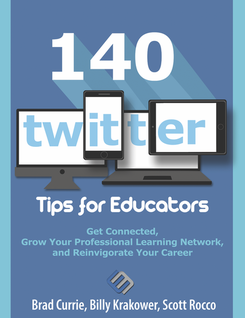
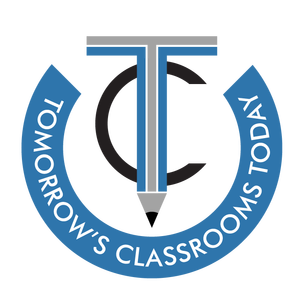
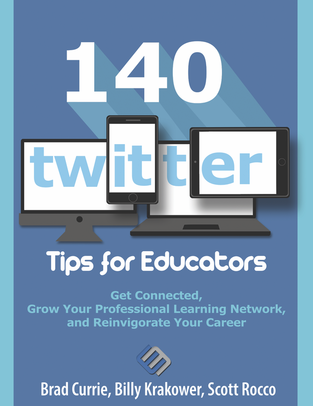

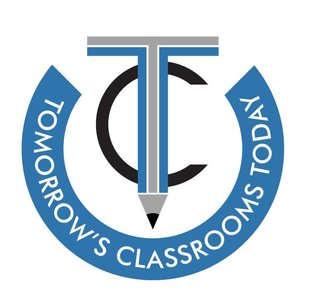
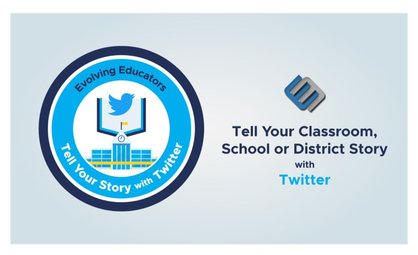
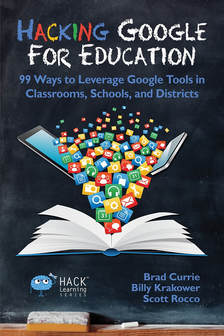
 RSS Feed
RSS Feed
